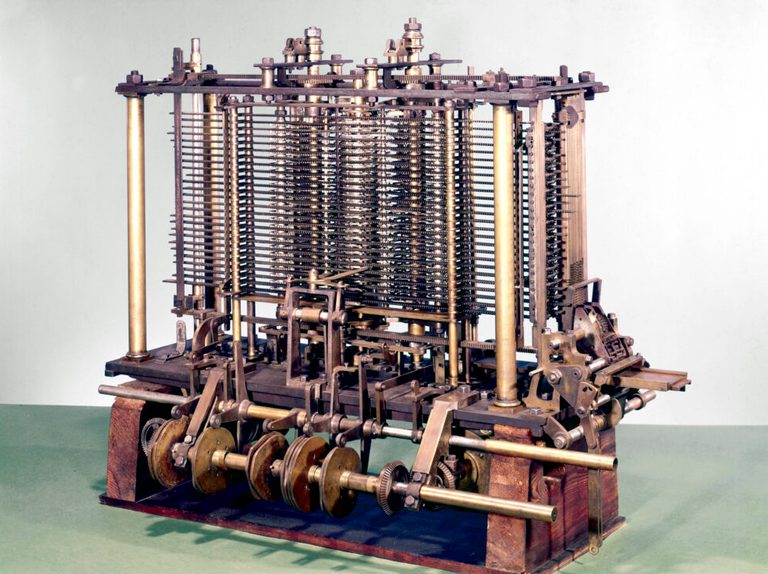Charles Babbage, an English mathematician and inventor, conceived the idea of the Difference Engine in the early 1800s. His motivation was to create a machine that could perform mathematical calculations automatically and accurately, without the errors inherent in manual calculations.
The Difference Engine was designed as a complex mechanical device, comprising gears, levers, and cylinders, all controlled by a system of cranks and shafts. Babbage intended it to be powered by hand-cranking or steam power, though his later designs incorporated more sophisticated mechanisms.
The way it worked was based on something called the Method of Differences. This method allowed the machine to calculate things like tables of numbers or solve mathematical problems that involved a lot of repetitive calculations. Instead of using paper and pen to do math, you could feed the Difference Engine a set of special cards with holes punched in them. These cards told the machine what numbers to add or subtract and how many times to do it.
Punched cards were typically divided into columns and rows. A standard format had 80 columns and 12 rows, providing space for up to 80 characters of data. Different combinations of holes represented different characters or numbers. For example, a specific pattern might represent the letter ‘A’, a number, or a command for the computer to perform a specific operation.

Besides data, punched cards could also contain instructions for the computer. These instructions could tell the computer to perform calculations, store data in memory, or print results. The sequence of punched cards determined the sequence of operations the computer would perform. Programmers would arrange the cards in a specific order to achieve desired computations or tasks.
Computers were equipped with card readers that could read the pattern of holes punched in the cards. As each card was fed into the reader, the computer would interpret the data or instructions encoded in the card. Once read, the computer would process the data according to the program instructions contained in the cards. This could involve performing calculations, sorting data, or generating reports.
Punched cards provided a standardized and efficient way to input large volumes of data and programs into early computers. They were also durable and could be easily transported. Programming using punched cards required careful planning and handling. Errors in punching or sequencing cards could lead to incorrect results. Additionally, updating or modifying programs involved physically rearranging or replacing cards.
Punched cards remained in use well into the mid-20th century, even as newer input methods such as magnetic tapes and direct keyboard entry emerged. They were eventually replaced by more versatile and faster methods of data entry and storage.
The Difference Engine was a groundbreaking invention that pioneered mechanical calculation and laid the groundwork for the development of subsequent computing technologies. While it was never fully realized in Babbage’s era, its conceptual framework and principles contributed significantly to the evolution of computing machines in the centuries that followed.

